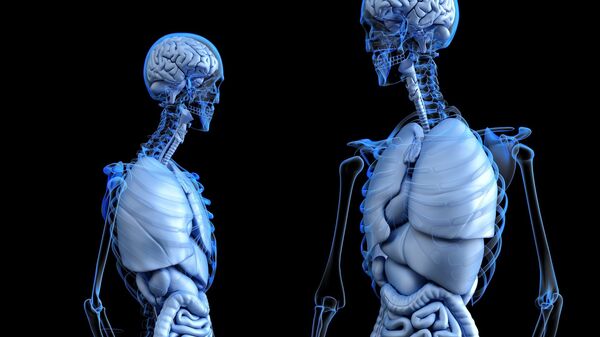Researchers from Immanuel Kant Baltic Federal University (IKBFU), in collaboration with their colleagues from the Ural Federal University and the Institute of Electrophysics of the Ural Branch of the Russian Academy of Sciences (RAS), confirmed that iron oxide nanoparticles can be used for magnetic biosensing systems. The paper was published in the Journal of Magnetism and Magnetic Materials.
READ MORE: Mystery of Dark Matter: What the Detector in Italy Has Actually Picked Up
Magnetic biosensing is a cross-disciplinary field at the intersection of physics, chemistry, material science, nanotechnologies and medicine, which is used to determine a body's state of health according to its responses to the application of an external magnetic field. Tissues and fluids of living organisms by themselves respond weakly to this field.
Therefore, in order to conduct magnetic biosensing, one needs to introduce magnetic tags — particles that will react in a certain way to the external field — into the body. Of course, these particles must be safe for a living organism's tissues and must be very small in size, nanoscale.
READ MORE: Quark Fusion Eight Times More Powerful Than Nuclear Fusion
The instrument used for conducting magnetic biosensing is called a biosensor. It makes it possible to automatically collect and store data about the biosystem (namely, the human body or its parts). Even someone with no special medical training can control the process as well as various biological systems with the help of a biosensor.
Magnetic biosensors are made up of at least two magnetic materials: a sensor element that detects weak fields, and nanoparticles. The biosensor converts the changes in a magnetic field into changes in frequency, current or voltage.
The magnetic nanoparticles used in biosensors can penetrate cells selectively — only cancer cells, for example — making it possible to diagnose and determine the location of a tumor. Nanoparticles can also be used to treat cancer: under certain conditions, alternating electromagnetic fields lead to the rapid heating of nanoparticles inside cancer cells, destroying metastases. Even when located outside the body (but close enough to the tumor), once intravenous magnetic particles are introduced into the body, the field sensor, based on the strength of the signal, make it possible to accurately determine the exact moment when one should start the heating process, thus reducing the risk of introducing an excessive amount of nanoparticles into the body.
At the same time, experts emphasize that nanoparticles in the ensemble differ somewhat in size, shape and surface characteristics. Therefore, there are certain differences in properties of these particles (in their magnetic response, for example), which can affect the quality of research. Only those nanoparticles of the same batch, which were created at the same time, have minimal differences in their characteristics. That is why it is important to develop new methods that will make it possible to manufacture larger batches of magnetic nanoparticles with exactly the same characteristics for practical applications. One such method is laser target evaporation for the production of iron oxide nanoparticles, which was developed in the Institute of Electrophysics of the Ural Branch of the Russian Academy of Sciences.
From the materials obtained, researchers at the Ural Federal University created stable ferrofluids, systems consisting of water or any other organic solvent and tiny particles of a ferrous metal that change their shape when exposed to a magnetic field. Researchers at IKBFU studied ferrofluids with a given concentration of iron, and human cells obtained from fat tissue, in vitro (outside the living organism). Experiments showed that the particles caused no damage to living tissue.
"Let's consider a hypothetical case. Diagnostics or treatment was carried out with the help of nanoparticles. Some of the particles, however, remained unused, causing an undesirable toxic effect. We believe that it is possible to introduce a synthetic ferrogel with attached cells of a certain nature, which will then start encapsulating the excess nanoparticles. Using a magnetic field sensor, one could control the degree of filling and remove the ferrogel with magnetic particles when necessary, reducing the toxic effect on the body," said Larisa Litvinova, head of the Laboratory of Immunology and Cellular Biotechnology.
The research showed that under certain conditions magnetic iron oxide nanoparticles penetrate cells and accumulate inside them without damaging the living tissues. Thus, researchers confirmed the effectiveness of the model material, which can now be used for the development of new types of magnetic biosensors based on the response of the sensor to the number of nanoparticles in cells.


